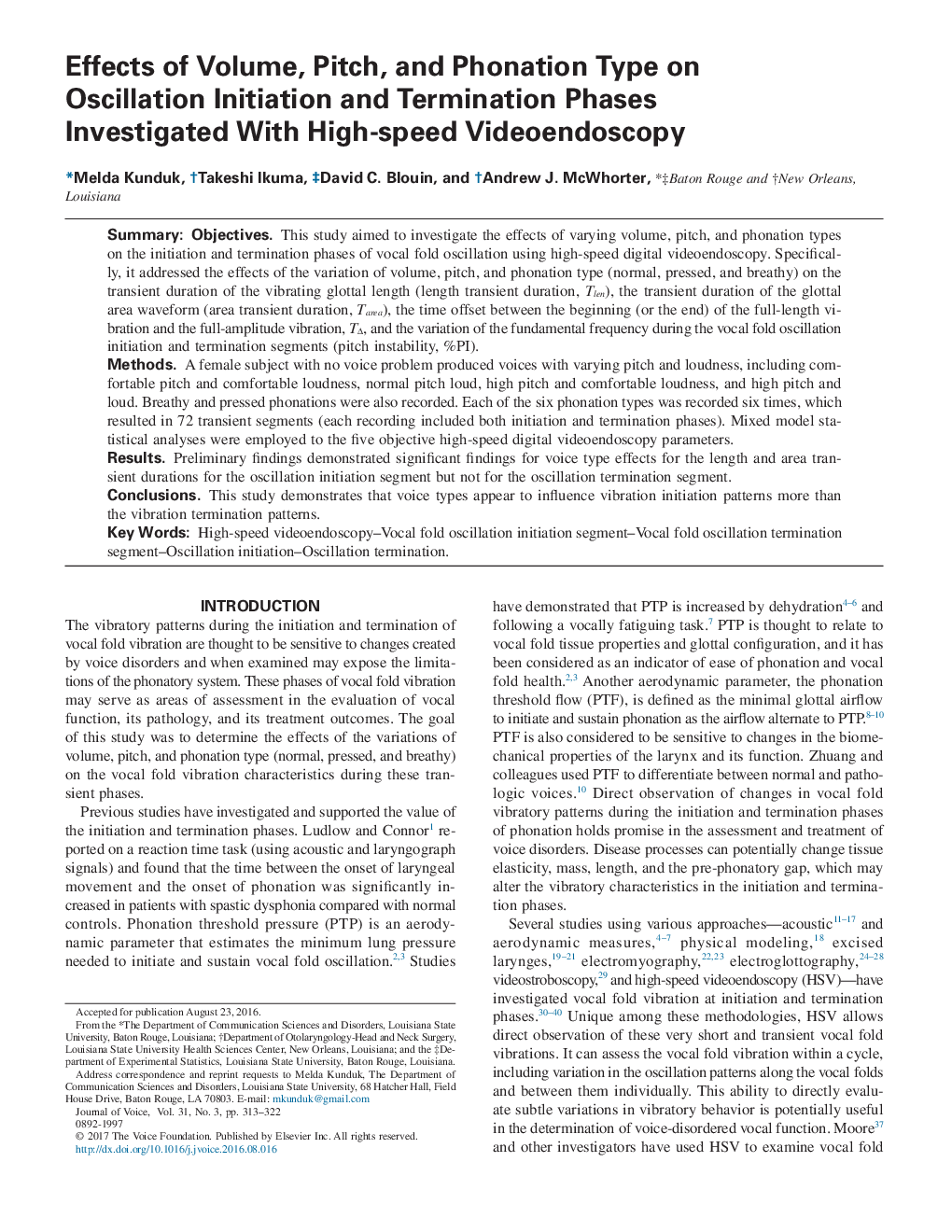| Article ID | Journal | Published Year | Pages | File Type |
|---|---|---|---|---|
| 5124233 | Journal of Voice | 2017 | 10 Pages |
SummaryObjectivesThis study aimed to investigate the effects of varying volume, pitch, and phonation types on the initiation and termination phases of vocal fold oscillation using high-speed digital videoendoscopy. Specifically, it addressed the effects of the variation of volume, pitch, and phonation type (normal, pressed, and breathy) on the transient duration of the vibrating glottal length (length transient duration, Tlen), the transient duration of the glottal area waveform (area transient duration, Tarea), the time offset between the beginning (or the end) of the full-length vibration and the full-amplitude vibration, TÎ, and the variation of the fundamental frequency during the vocal fold oscillation initiation and termination segments (pitch instability, %PI).MethodsA female subject with no voice problem produced voices with varying pitch and loudness, including comfortable pitch and comfortable loudness, normal pitch loud, high pitch and comfortable loudness, and high pitch and loud. Breathy and pressed phonations were also recorded. Each of the six phonation types was recorded six times, which resulted in 72 transient segments (each recording included both initiation and termination phases). Mixed model statistical analyses were employed to the five objective high-speed digital videoendoscopy parameters.ResultsPreliminary findings demonstrated significant findings for voice type effects for the length and area transient durations for the oscillation initiation segment but not for the oscillation termination segment.ConclusionsThis study demonstrates that voice types appear to influence vibration initiation patterns more than the vibration termination patterns.
